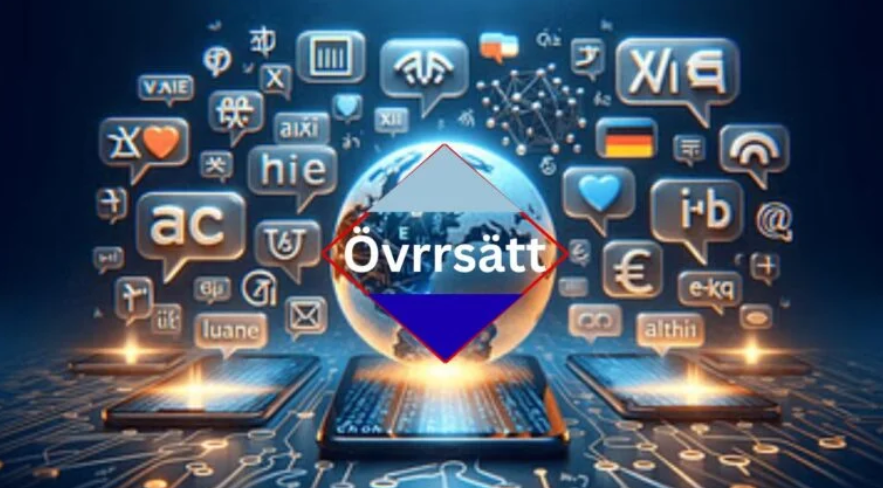Language is a living, changing tool shaped by how people use it in real life. One fascinating example of this is the use of the word “övrrsätt.” Although this term may not be technically accurate or standard in Swedish, its appearance in search bars, texts, and online messages shows how users interact with language in the digital world.
This article takes a closer look at what “övrrsätt” really means, why it appears online, and how it reflects modern language behavior. This is not just a spelling issue—it reveals much about global communication, translation habits, and the role of intent in language understanding.
What Does “Övrrsätt” Suggest?
At first glance, “övrrsätt” appears to be a misspelling of the Swedish verb “översätt,” which translates to “translate” in English. However, the altered spelling—extra “r” and slight deviation—suggests this is either a typo or a phonetic guess by someone unfamiliar with Swedish spelling rules.
Despite being incorrect in formal writing, people still understand what it means. This shows a key feature of language: context often matters more than precision, especially online.
Why People Type “Övrrsätt Det Här”
The phrase “övrrsätt det här” is commonly meant to say “translate this.” The intent is clear, even if the grammar isn’t. This reflects a few realities of the digital age:
- Instant Communication: People value speed over grammar when typing.
- Non-native Usage: Many users typing this phrase are likely not native Swedish speakers.
- Phonetic Guessing: Some may guess spellings based on pronunciation or memory.
- Search Engine Adaptation: Platforms like Google or YouTube often autocorrect such terms and still deliver accurate results.
Language vs. Communication: The Key Difference
There’s a major difference between language as a system and communication as a goal. While grammar, vocabulary, and spelling form the structure of a language, communication is about conveying meaning.
When someone types “övrrsätt,” their goal isn’t linguistic perfection—it’s functional understanding. And most often, the person on the other side (or the machine interpreting it) still understands what’s being asked.
This is where machines and AI tools step in to fill the gap, translating not just words, but intent.
Role of AI in Interpreting “Incorrect” Language
Modern translation engines, chatbots, and search algorithms are not just rule-based systems anymore. They have evolved to:
- Recognize spelling errors.
- Understand context.
- Interpret intent based on usage data.
- Offer suggestions and corrections without user request.
So, when someone enters “övrrsätt,” even if it’s technically wrong, AI tools often auto-correct or interpret it as “översätt.”
This isn’t just helpful—it’s a revolutionary shift in how technology interacts with human language. Tools are no longer strict grammar checkers; they are communication partners.
The Impact of Misspellings in Digital Culture
Words like “övrrsätt” reflect a broader digital pattern. Internet users frequently type words that don’t appear in any dictionary but still carry clear meanings:
- “Frendz” instead of “friends”
- “Gud nite” for “good night”
- “Plz” for “please”
These forms, often seen as casual or incorrect, play a real role in shaping modern online communication. “Övrrsätt” is part of this trend—it’s not formal Swedish, but it’s part of internet Swedish.
Intent Beats Accuracy in Most Online Interactions
In traditional language education, accuracy is everything. But online, intent often wins. If your audience understands you, even a wrongly spelled word serves its purpose.
For instance, typing “övrrsätt det här till engelska” is probably meant to say “translate this to English.” Despite the spelling, the user’s intent is clear. Most online tools can process and fulfill this request.
Translation Tools Adapt to Human Behavior
The rise of digital translation platforms has helped bridge language gaps. But more importantly, these platforms learn from users. When enough people type “övrrsätt,” the system eventually starts to recognize it as a signal.
Some platforms even begin to suggest “Did you mean översätt?”—a gentle nudge toward standard spelling without blocking the communication.
That’s how intelligent systems improve: by adapting to common patterns and helping users get the results they want.
The Future of Language: More Flexibility, Not Less
As people from different countries connect online, languages mix, bend, and adapt. New hybrid words and spellings emerge. Terms like “övrrsätt” are small examples of this trend.
This might worry language purists, but from a functional view, it’s progress. The goal of language is not to preserve rules—it’s to enable understanding.
We might see more of this in the future:
- Spelling adapted to search engines
- Grammar simplified for texting
- Transliteration from native alphabets
- AI recognizing cross-language intent
And yes, more “creative” spellings like “övrrsätt” becoming accepted online slang.
Should We Correct Such Words?
This is a common debate. Should platforms correct user spelling automatically or preserve their input?
The answer depends on context:
- In academic or legal settings, precision matters.
- In casual, digital, or search-based communication, flexibility helps.
It’s all about purpose. If someone is writing a school essay, “övrrsätt” is wrong. But if they’re typing a quick translation request, it works just fine.
What “Övrrsätt” Teaches Us About Language Today
The existence of a word like “övrrsätt” might seem like a minor spelling mistake, but it actually reveals big insights about modern communication:
- People prioritize clarity and speed over rules.
- Language is constantly evolving through use.
- Intent matters more than form in many contexts.
- Technology is becoming better at understanding human variation.
So next time you see a “wrong” word online, ask yourself: is it really wrong, or just part of the new language landscape?



